Five Artists Who Put Modern Indian Art On The Global Platform
The global acclaim that Indian art now enjoys is the result of the tireless creativity pursued by highly talented artists of the time.
Mothers hold a high position in Indian culture and motherhood has been extensively represented in Indian art. On Mother’s Day, Sahapedia and DAG look at the relationship between mother and child by five modern Indian artists MV Dhurandhar, MF Husain, Jamini Roy, Madhvi Parekh and PT Reddy
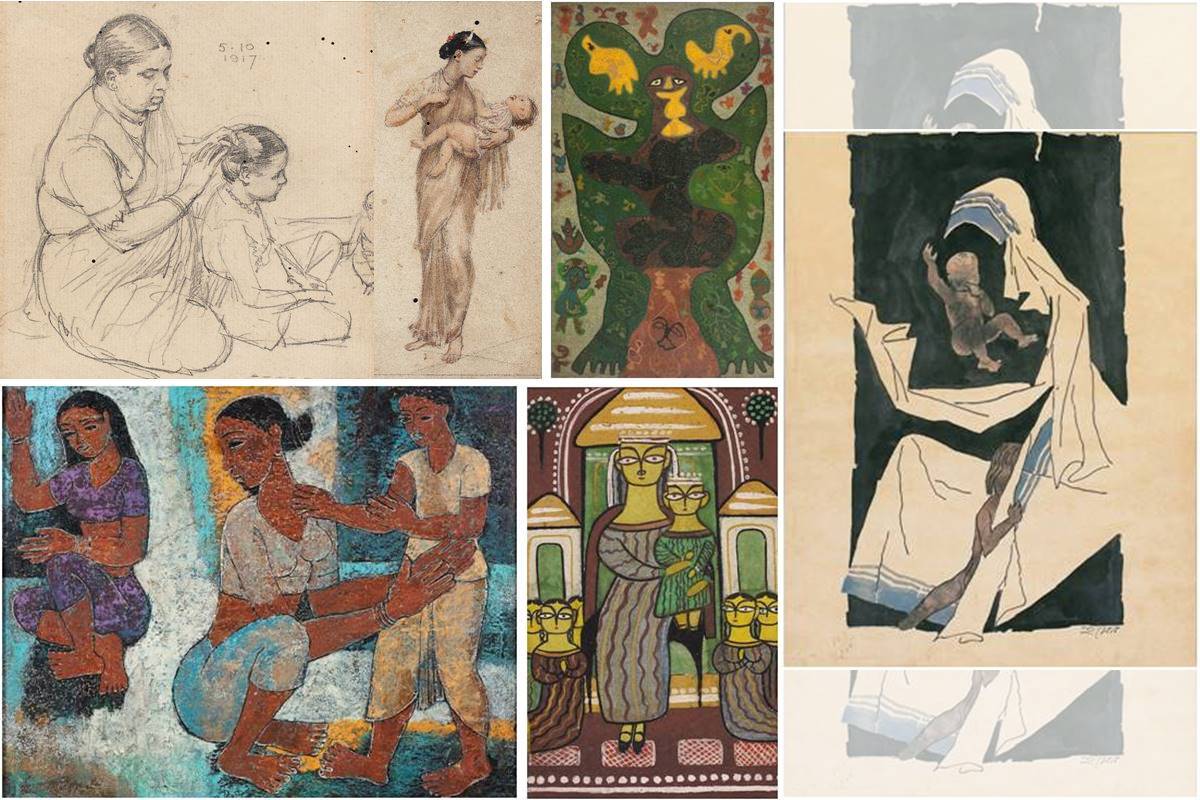
(Clockwise from above) PT Reddy, MV Dhurandhar, Madhvi Parekh, MF Husain, and Jamini Roy. (Photo credit: DAG via Sahapedia.org)
The image of a mother and child has endured in art across time and region. India has had a long-standing tradition of mother worship and reverence for a motherly figure, and the image of the mythological mother and child has remained a constant fascination. Artefacts found from the Indus Valley Civilisation have been identified as depictions of mother goddesses.
These tiny renderings of mother goddesses have many interpretations, but we can definitely draw conclusions that our ancestors found some divinity in motherhood. ‘Yashoda and Bal Krishna’ or ‘Mother Mary with Jesus’ as ideals of motherhood have always had a place in many an artist’s themes.Even Mother India (or Bharat Mata) is a recurring theme in Indian art and there have been various renditions of the Mother India by painters ranging from Abanindranath Tagore to Amrita Sher Gill.
Advertisement
Internationally, artists since the Renaissance have been using their mothers as muses, be it Rembrandt, Albrecht Durer or Salvador Dali. The image of the Madonna and Baby Jesus can be traced back to depictions as early as the 2nd or 3rd century and Raphael’s depiction of the divine mother and child are quite popular.
Advertisement
On the occasion of Mother’s Day, we look at mother in Indian art through paintings by five modern artistswho explored the complex and yet beautifully simple relationship between the mother and child.
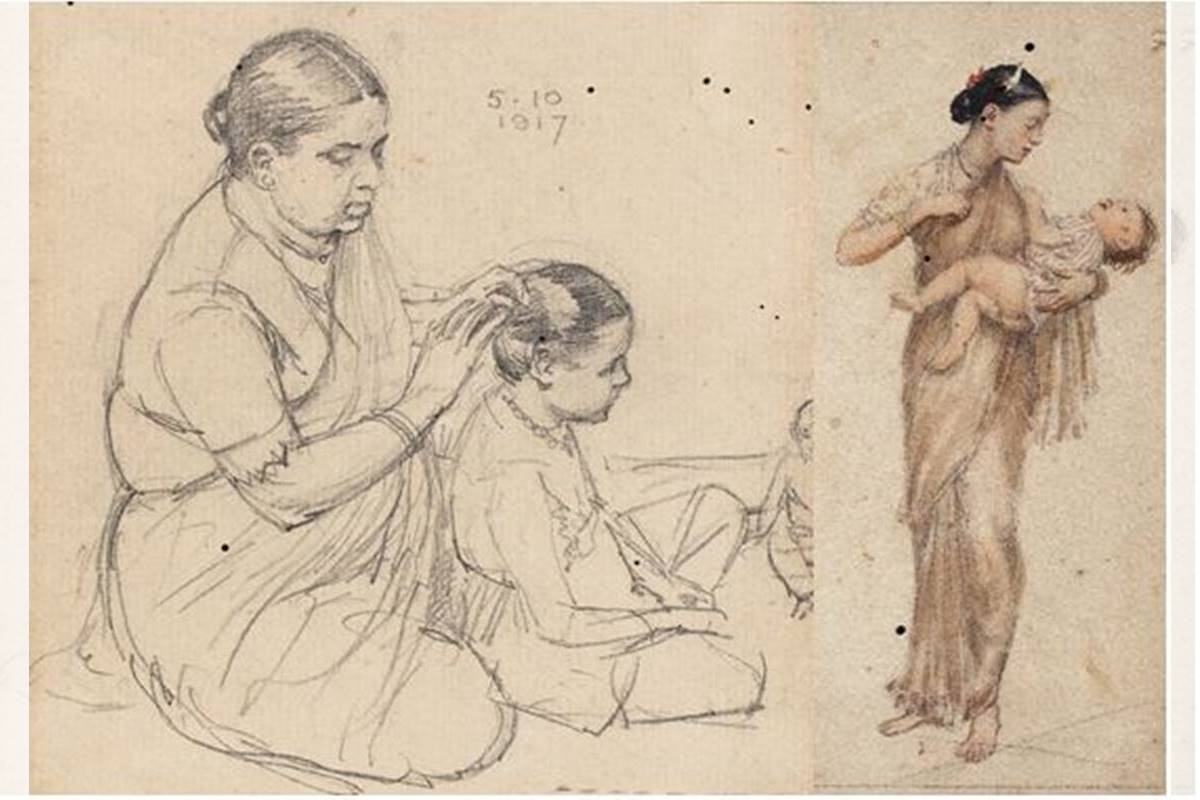
MV Dhurandhar was possibly one of the most popular academic Indian artists after Raja Ravi Varma, he received his training from the renowned SirJ.J. School of Art, Bombay. He drew women as they went about their daily lives, in different moods and around the city of Bombay aswell. His illustrations for Otto Rothfield’sWomen of India were particularly poignant, especially the relationship between mother and child. Dhurandar also published a book, My Wife in Art, where he explores the relationship between mother and child through his own family, over time. These two sketches from his vast collection show rather touching moments between a mother and child, especially the intimate moment of a mother and a daughter as they go about their daily routines. Dhurandhar offers an insight into his family, not only as an artist but as a father observing and capturing the lives of those around him.
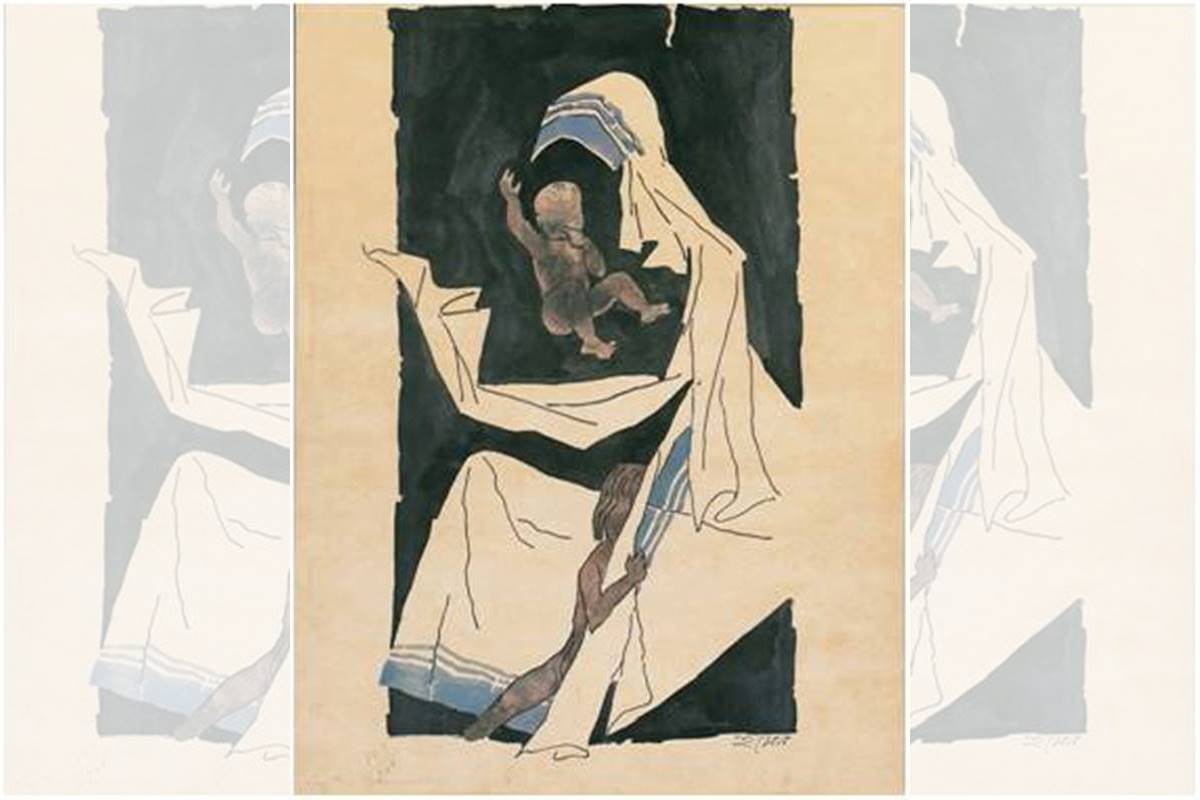
MF Husain, who began his career by painting cinema hoardings, experimented with various forms, genresand mediums. His depiction of Mother Teresa is an ode to the universal motherhood that she embodied and the kindness she bestowed on everyone. In his Mother Teresa series, one not only sees her limitless compassionwith children but also with adults, inspiring Husain to depict her as an ‘ideal mother’. He never focused on creating features of her face, concentrating instead on her trademark blue-border saree, thus, signifying the artist’s search for a maternal figure throughout his life. When she won the Nobel Peace Prize, Husain went to welcome her and handed her a portrait sketch, which she autographed ‘God bless you.’
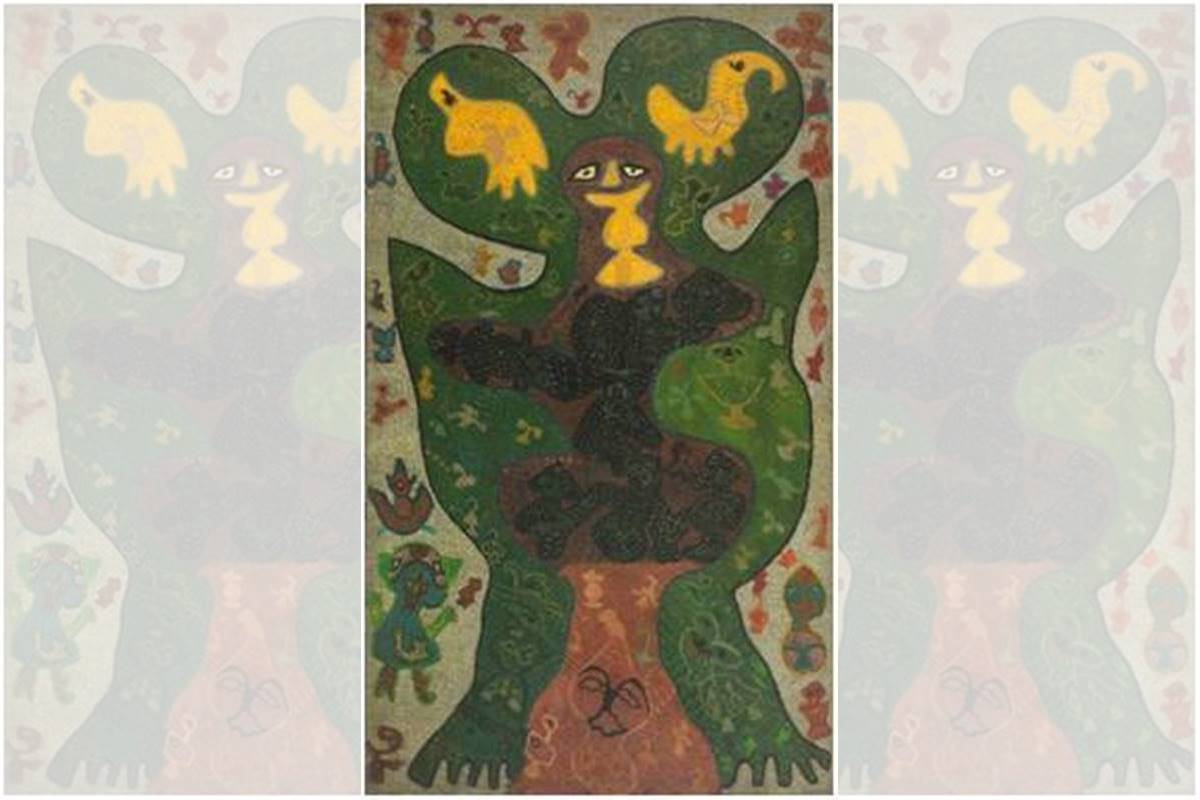
Madhvi Parekh’s paintings are unplanned, they unfold like a story which she adapts as the narrative develops. Apart from folk motifs, legends and figures, Parekh uses figures and abstract characters in her compositions. Like in this one titled ‘Mother’, the main character of her composition is usually placed right in the centre. The ‘mother’ in this painting could be interpreted in many ways—she could be depicting Mother Nature in all her beauty and fury, the character of a mother from a story or it could be how the artist sees the persona of mother, all-encompassing and often juggling various roles at once. Interestingly, Parekh’s journey as an artist began during her first pregnancy, which adds a tenderness to her art that is often seen as depicting a childlike wonder at the world.

PT Reddy was born in Andhra Pradesh and studied painting at the J.J. School of Arts, Bombay. He spent his younger days in the family business and returned to art in the 1950s. He evolved a unique vision of his own, creating complex portraits. Reddy’s lines flow evenly, rarely changing in thickness or intensity. This particular image was painted in 1958; an oil painting done on board showcases the artist’s sensitivity and skill in rendering realistic portrayals of life around him. Unlike Dhurandhar, who gave us an insight into the relationships between his family members, Reddy is an observer of the world around him. In this rendering, he depicts a mother and her two children, with their colourful clothes, almost playful; the mother is reaching for the boy while looking back at the daughter.
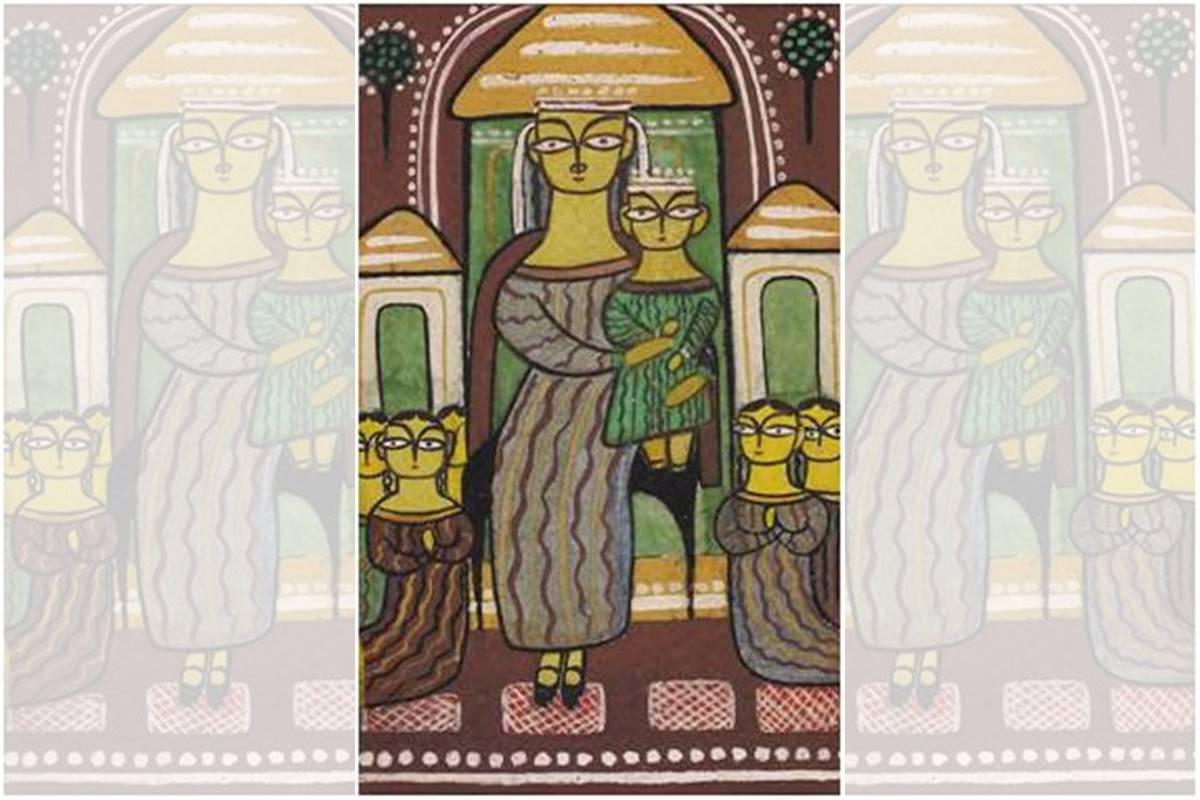
Jamini Roy was trained in the academic realist style before he renounced it in favour of his own style of modernism that emerged from the folk traditions around him. Roy’s paintings on the subject of mother and child—a theme he painted quite profusely—are wholesome and simple, and build on the deep connection between the two characters. The artist’s depiction of mother and child range not only of the local women he saw, but also the mythical and religious figures of Yashoda and Krishna, and Baby Jesus with Mary. The theme of motherhood for Roy is not restricted to the human either, the relationship between mother and child transcends humanity to all the other creatures around us, especially the image of a cow and a calf.
(This article is part of a Saha Sutra collaboration between DAG and www.sahapedia.org, an open online resource on the arts, cultures and heritage of India.)
Advertisement